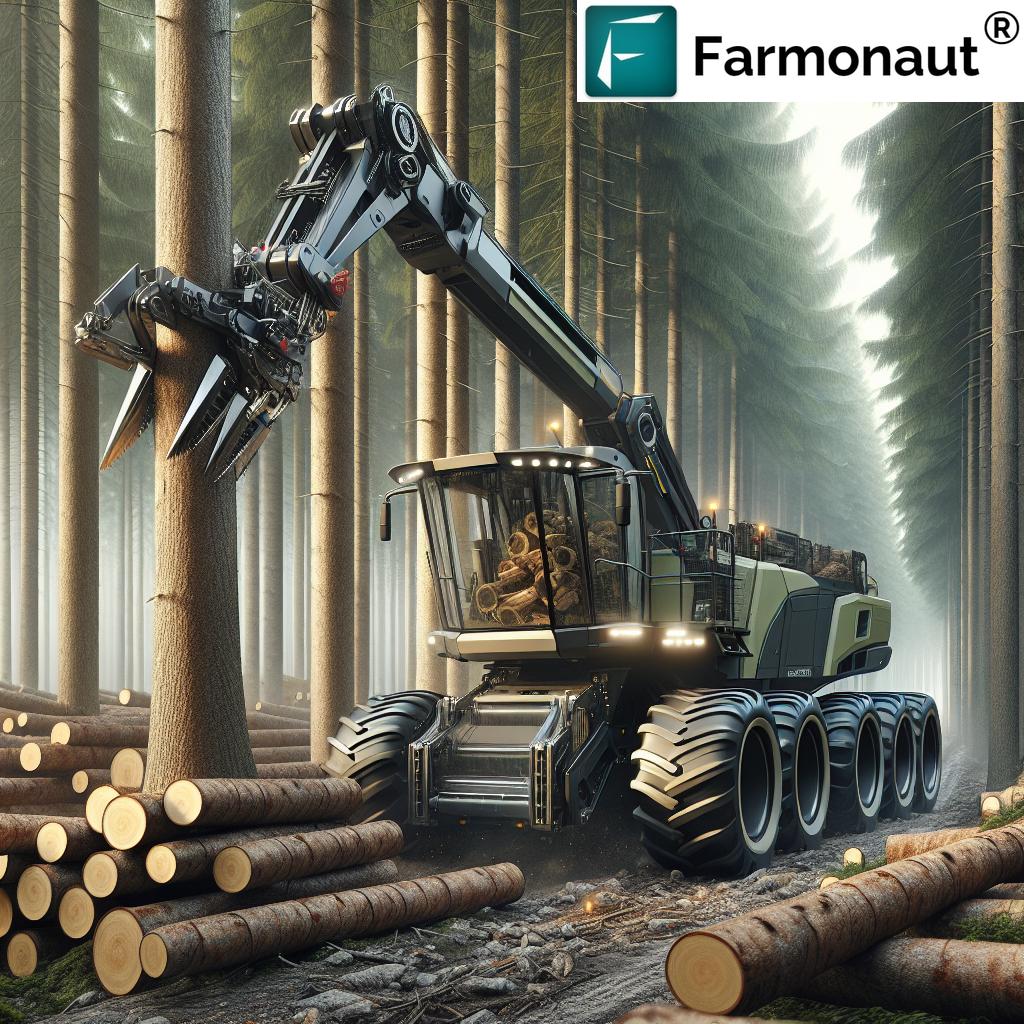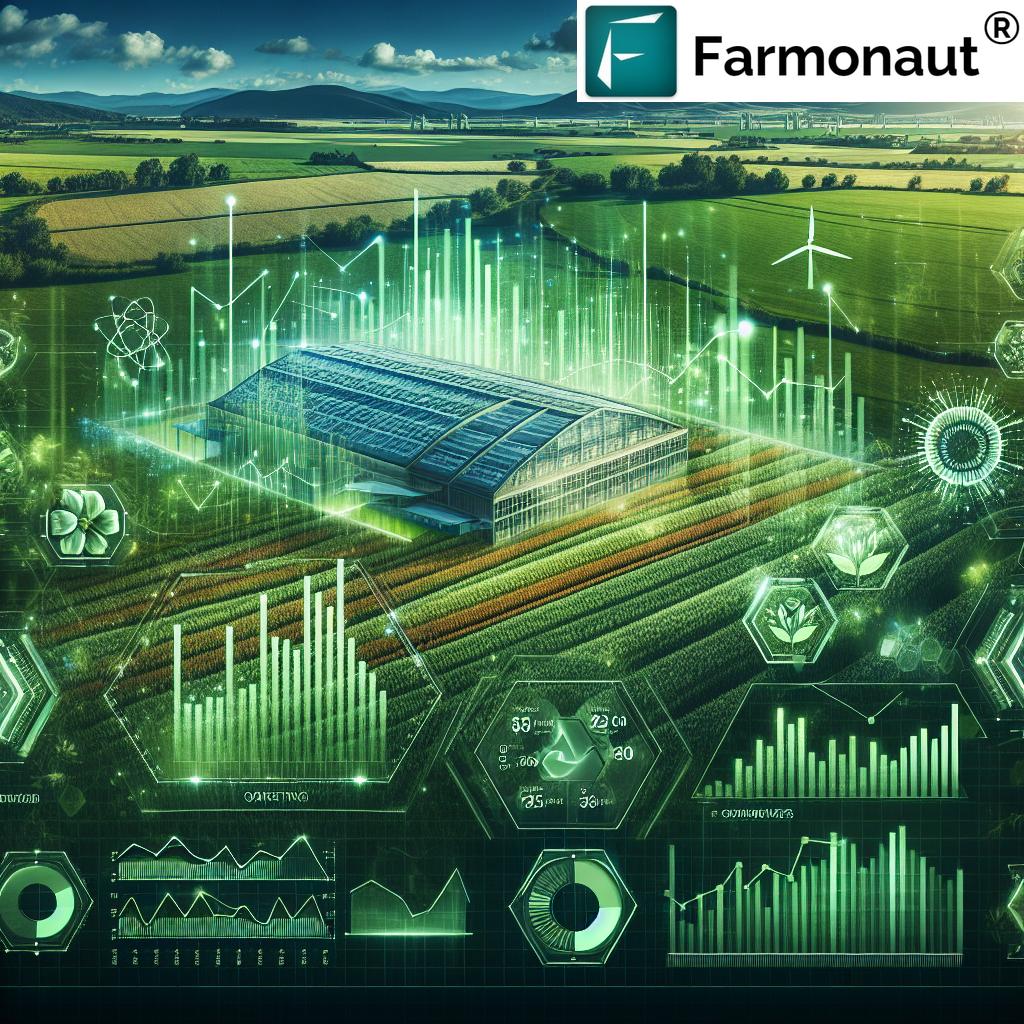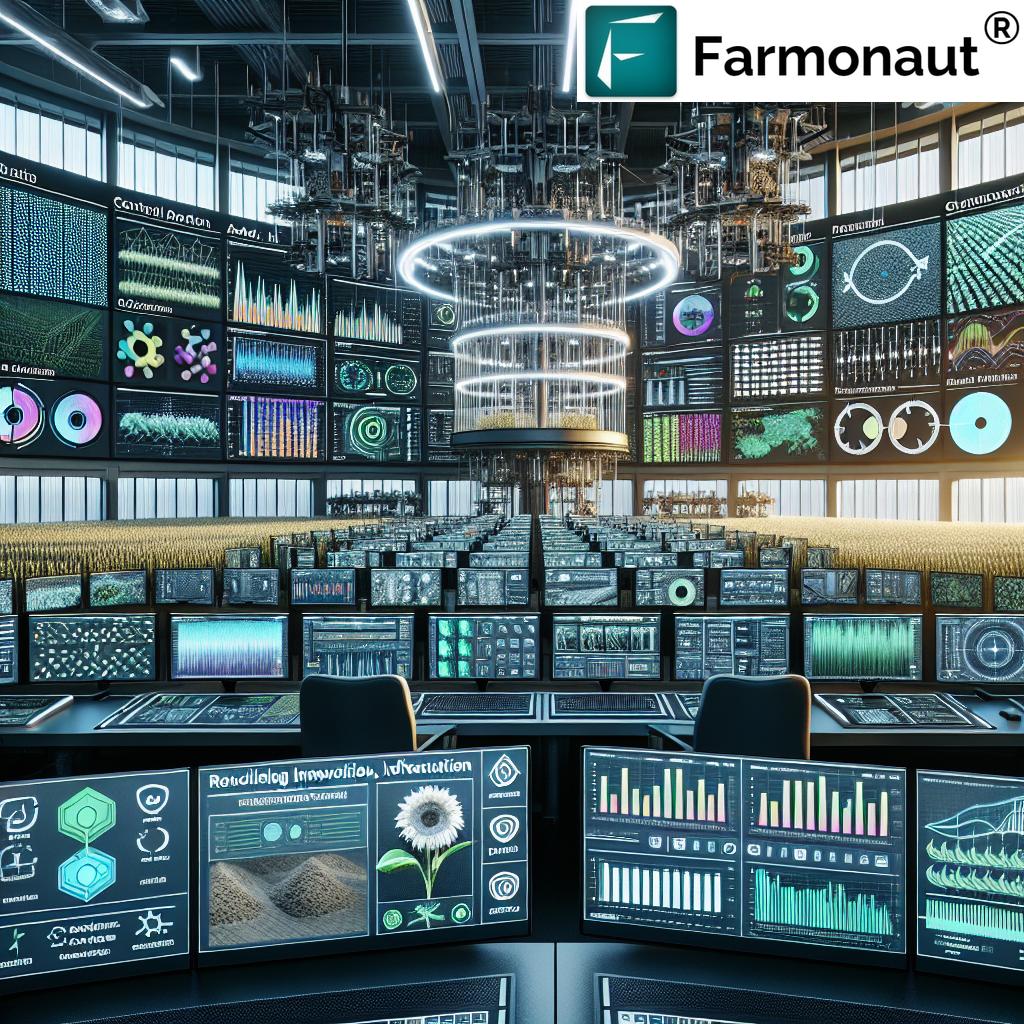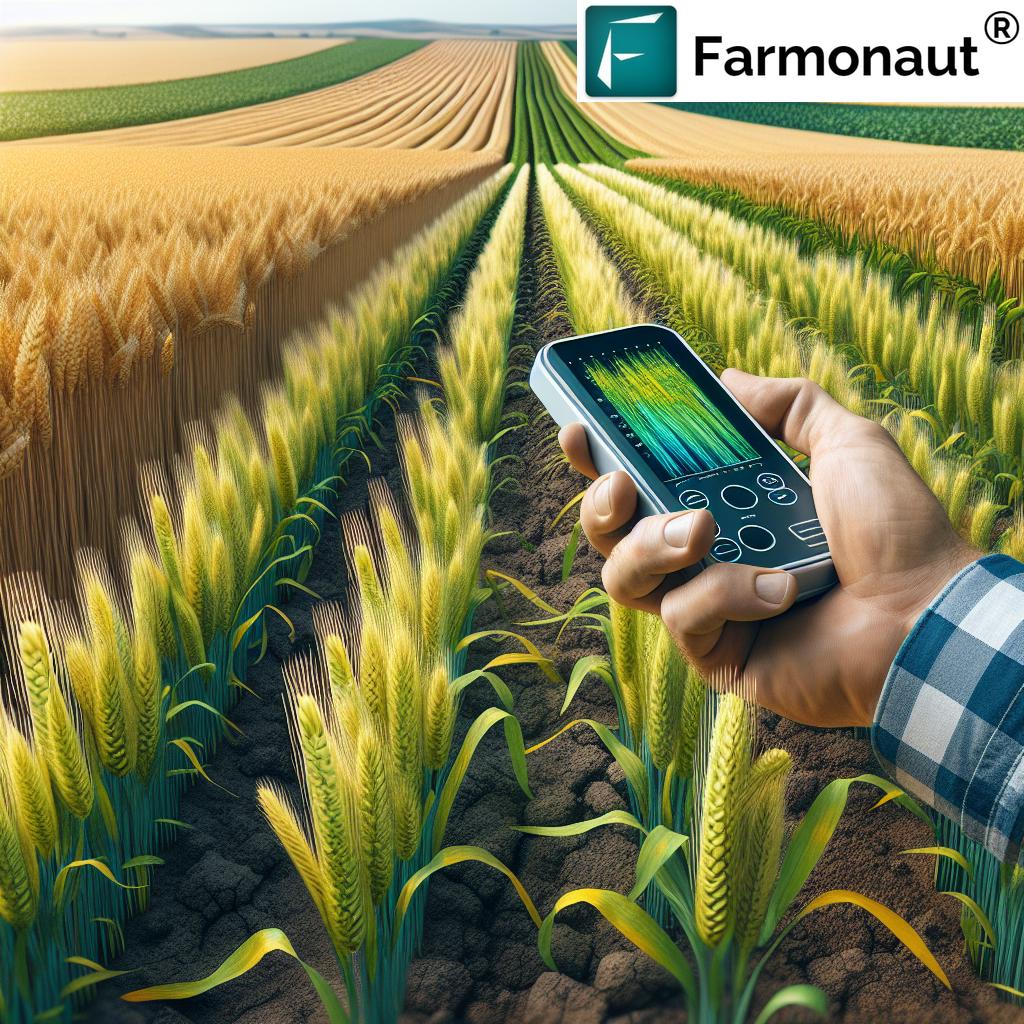Deer Farming & Equipment in 2025: Precision, Water, Cover, Hen
“By 2025, over 60% of deer farms will use precision water management systems for sustainability, reports Farmonaut.”
Table of Contents
- Deer Farming: An Overview for 2026
- Precision Agriculture Trends Shaping Deer Farming
- Smart Deer Farm Equipment: Types & Benefits
- Water Farming: Optimizing Water Management for Deer Farms
- Cover Farming & Environmental Stewardship
- Our Role: Farmonaut Satellite Technology in Deer Farming
- Table: Smart Equipment Solutions for Deer Farming (2025)
- Hen Farming & Deer Herds: Diversification and Synergies
- Challenges and Opportunities for Deer Farming in 2026+
- Key Innovations in John Deere Precision Farming
- Conclusion: The Future of Deer Farming & Precision Agriculture
- FAQ: Deer Farming & Precision Equipment
- Farmonaut Subscription Plans
Deer Farming: An Overview for 2026
Deer farming has rapidly evolved over the past decade, emerging as a niche but increasingly promising sector, especially in regions with climatic and economic constraints affecting traditional livestock farming. In 2026 and beyond, the synergy of precision agriculture, sustainable practices, water farming, cover farming, and advanced deer farm equipment has transformed how globally dispersed deer farms operate—enabling higher efficiency, animal welfare, and sustainability.
This new model for modern deer farming involves raising a diverse array of species such as red deer, fallow deer, and elk. These animals are primarily bred for venison (a highly nutritious, lean meat), velvet antlers (used in dietary supplements), prestigious hides, and breeding stock. Unlike cattle, sheep, or poultry, deer are sensitive and require specialized habitat management, tailored nutrition, and minimal-stress handling. This demand has, in turn, fueled the development and adoption of specific deer farm equipment.
Deer as Sustainable Livestock: Why Now?
- Nutritional Demand: Venison is gaining appeal for its lean composition and low cholesterol, fitting into modern health-conscious diets.
- Climate Adaptability: Deer thrive where cattle may struggle, especially in marginal climates.
- Economic Resilience: With market prices for traditional livestock fluctuating, deer products represent a niche yet lucrative revenue stream.
- Biodiversity & Ecosystem Services: Unlike intensive livestock, managed deer farms can enhance local biodiversity when integrated into sustainable, rotational, or agroforestry systems.
- Water Efficiency: Compared to cattle or pigs, deer typically require less water per kilogram of weight gain, making them ideal for water farming initiatives.
Specialized Deer Farm Equipment: The Cornerstone of Modern Management
The stewardship of deer herds relies on a suite of specialized equipment:
- Automated feeders that deliver precise feeds, reducing labor and preventing competition-induced stress.
- Smart monitoring systems using sensors and IoT devices to track health, grazing patterns, and environmental conditions in real time.
- Mobile handling yards—modular, animal-friendly fences and chutes that enable stress-free herding, selection, and veterinary interventions.
- Automated watering systems designed to optimize water usage and monitor for contamination or shortages, minimizing manual intervention.
Precision Agriculture Trends Shaping Deer Farming
Precision agriculture—or precision farming—represents a monumental leap forward for both crop and livestock sectors. Its impact on deer farming is amplified by leading companies like John Deere, whose precision equipment and smart tools were traditionally aimed at crops but have now evolved to facilitate livestock and deer operations.
Key Precision Technologies Transforming Deer Farms
- GPS-Guided Machinery: Enables the mapping of pasture variations, supports rotational grazing, and helps identify overgrazed or underutilized zones for improved grazing patterns.
- Drones & Remote Sensing: Regular drone flights monitor pasture quality, animal distribution, and early warning signs—crucial for effective water management and soil health.
- IoT Devices: Collars and ear tags relay real-time data about animal health, movement, and environmental conditions straight to the farm dashboard or app.
- Soil Sensors: Support precise fertilization and irrigation, reducing waste and maximizing soil productivity.
- Automated Feed & Water Systems: Optimize feeding schedules and water usage by analyzing herd behavior—resulting in healthier, stress-free animals.
Soil Health & Forage Management for Deer
- NDVI & Multispectral Mapping: Using advanced platforms like ours (Farmonaut), farms gain satellite imagery to monitor vegetation dynamics—boosting carbon footprinting and soil fertility stewardship.
- Forage Quality Monitoring: Data-driven insights ensure deer receive balanced, seasonally optimized nutrition, directly impacting venison yield and animal health.
- Rotational Grazing Support: Automated alerts and visual records prevent overgrazing and help maintain pasture health.
Smart Deer Farm Equipment: Types & Benefits
Modern deer farm equipment is not only smarter but also built around the principles of animal welfare, resource efficiency, and sustainability. As we move past 2025, the following equipment types are revolutionizing operations:
- Precision Feeders: Dispense appropriate feed quantities per deer based on herd behavior analytics, reducing waste and supporting even growth.
- Automated Watering Systems: Monitor and regulate water flow, detect leaks/contamination, and adjust volume to minimize waste.
- Smart Cover Fabric & Shelters: Provide shade, minimize heat stress, and help maintain controlled microclimates throughout the year.
- AI-Powered Surveillance: Real-time video analytics to detect abnormal behavior, health issues, and fence breaches—ensuring deer health and biosecurity.
- Mobile Handling Yards: Modular systems for stress-free sorting, tagging, veterinary procedures, and transport—boosting both welfare and efficiency.
Benefits of Automation & Connectivity
- Reduces manual labor and operational costs
- Improves deer health by minimizing stress and monitoring for early disease outbreaks
- Enhances environmental sustainability through resource optimization
- Supports biosecurity and traceability initiatives (see Traceability Solution)
- Facilitates compliance with emerging animal welfare, food safety, and environmental regulations
“Smart equipment adoption in deer farming has surged by 45% since 2022, driving efficiency in feed and cover management.”
Water Farming: Optimizing Water Management for Deer Farms
With water stress increasing worldwide, water farming—the intelligent management of farm water resources—is paramount for deer farming success. Effective water management ensures not just animal health but also high-quality pasture production and strong farm sustainability ratings.
- Precision Irrigation Systems: Direct water to areas of greatest pasture need, supporting lush forage growth even during dry spells and reducing overall water use.
- Water Quality Sensors: Monitor for contaminants, pathogens, and shortages, issuing alarms for proactive intervention.
- Satellite & Drone Monitoring: Platforms like ours at Farmonaut provide multispectral NDWI mapping, identifying water stress and optimizing irrigation schedules.
- Explore our Satellite API for integrating live water and soil monitoring into your farm systems.
- Automated Watering Troughs: Respond to herd movement and weather, delivering water only as needed to minimize evaporation losses.
Water Farming Benefits for Deer Operations
- Improves herd health by ensuring constant access to clean water
- Reduces operating costs associated with water delivery and loss
- Supports sustainable environmental stewardship—vital for farm certifications
- Makes farms resilient to climate variability and future drought risk
Cover Farming & Environmental Stewardship
Cover farming—the innovative use of cover crops—has become a best practice in sustainable and precision-oriented deer agriculture:
- Soil Protection: Cover crops protect against soil erosion, maintain fertility, and suppress weeds (reducing need for chemical inputs).
- Forage Extension: Certain cover crops serve as valuable emergency or off-season forage for deer herds.
- Biodiversity Enhancement: Cover plants attract beneficial insects, foster pollinators, and strengthen ecosystem services.
- Carbon Sequestration: By enriching organic matter, cover farming aids in carbon footprint reduction.
- Water Management: Enhanced soil structure increases water-holding capacity and resilience against drought.
Our large-scale farm management tools are designed to help farms monitor cover crop establishment and performance over extensive acreage—from deer paddocks to multi-crop systems.
Agroforestry: Deer, Trees & Habitat Integration
- Agroforestry and Silvopasture: Integrating deer with tree crops provides natural shelter, shade, and additional forage (tree browse).
- Microclimate Management: Diversified landscapes improve animal comfort and decrease heat stress, especially in warming climates.
- Water Buffering: Treed riparian zones protect watercourses and improve water farming outcomes.
Such systems not only increase productivity but further the cause of sustainability—meeting environmental regulations and consumer expectations for ecologically responsible farming.
Our Role: Farmonaut Satellite Technology in Deer Farming
At Farmonaut, we are redefining how farms monitor, analyze, and optimize their operations. Leveraging satellite imagery and AI-powered analytics, we empower users in deer farming, water management, and cover crop monitoring far beyond what conventional equipment alone can provide:
- Satellite-Based Monitoring: Multispectral satellite images reveal vegetation health (NDVI), soil moisture, water bodies, and pasture productivity. This supports real-time and historical analysis for smarter decision-making.
- Jeevn AI Advisory: Real-time insights and weather forecasting tailored to local conditions (crucial for deer and hen farmers navigating variable climates or drought risks).
- Blockchain Traceability: For deer products like venison, hides, or velvet antlers, blockchain verification via our traceability solution ensures transparent, fraud-free supply chains—a growing market expectation.
- Fleet & Resource Management: Satellite data and analytics for machinery, handling yards, and transport tracking on deer farms. Explore our Fleet Management platform for full operational visibility.
- Environmental Impact Monitoring: Real-time carbon tracking and reporting for sustainability audits or market positioning (Carbon Footprinting).
Our cross-device platform (Android, iOS, Web) brings all these insights to your fingertips—whether benchmarking deer herd health, identifying optimal locations for forage cropping, or monitoring cover establishment via satellite from afar.
- Crop Loan & Insurance Services—for deer and hen growers seeking reliable, satellite-backed verification needed for insurance and financing.
Developers and integrators: Access our API developer docs for seamless integration of satellite-driven solutions into your own dashboards or agritech products.
Smart Equipment Solutions for Deer Farming: Features & Estimated Benefits (2025)
| Equipment Type | Core Technology | Estimated Cost Savings (%) by 2025 | Predicted Water Usage Reduction (%) | Improvement in Deer Health | Sustainability Rating |
|---|---|---|---|---|---|
| Precision Feeder | IoT Smart Sensing, AI Algorithms | 18-28% | N/A | Improved uniform growth, reduced stress | High |
| Automated Watering System | Sensor-Controlled, Cloud Monitoring | 12-20% | 22-47% | Fewer dehydration/illness events | High |
| Smart Cover Fabric | Reflective, Insulated Materials | 7-13% | 3-6% | Lower heat stress | Medium |
| AI-Powered Surveillance | Video Analytics, Machine Learning | 17-25% | N/A | Rapid disease/threat detection | High |
Hen Farming & Deer Herds: Diversification and Synergies
While deer farming and hen farming may seem worlds apart, forward-thinking operations increasingly recognize their synergies. Mixed livestock systems—especially in precision agriculture—make efficient use of pasture resources, nutrient cycling, and cover crops.
- Integrated Health Management: Satellites and AI track environmental parameters for both deer and hens—helping prevent shared health risks and optimize cross-species pasture rotations.
- Nutrient Cycling: Hen droppings enrich soil fertility, boosting forage for deer while leesening synthetic fertilizer dependence (enhancing sustainability and cost savings).
- Resource Optimization: Diverse operations reduce market risk and improve year-round cash flow, allowing investments in smart equipment for both sectors.
- Automated Mobile Coops: These precision systems allow field hens to graze following deer herds, naturally cleaning parasites and enhancing health outcomes for all livestock.
Challenges and Opportunities for Deer Farming in 2026+
Challenges to Watch
- Disease Management: Confined herds increase risk of outbreaks. Smart surveillance, traceability, and biosecurity must be prioritized.
- Breeding Optimization: Genetic diversity and performance require robust tracking and data-driven selection systems.
- Market Access: Specialty meat and antler markets are lucrative but require strict compliance with safety, transparency, and animal welfare.
- Climatic Volatility: Increased droughts and irregular seasons place immense emphasis on water and cover farming strategies.
- Technological Integration: The steep learning curve of automated systems calls for ongoing training and proactive management.
Opportunities on the Horizon
- Market Diversification: Venison and deer-derived products cater to health-focused and gourmet sectors—especially in regions seeking alternatives to beef or pork in 2026+.
- Transparency Demand: Consumers increasingly demand traceable, sustainably-produced deer products. Blockchain and satellite-based verification help farms stand out.
- Environmental Incentives: Practices that boost carbon sequestration or enhance water management can unlock new subsidies and market preferences.
- Agrotourism: Tech-empowered, ecologically responsible deer farms are fast becoming rural tourism destinations.
Tip: Discover our Agro-Admin App for streamlining large-scale farm management—a toolkit for tomorrow’s deer and hen farmers.
Key Innovations in John Deere Precision Farming for Deer Operations
As a global leader in agricultural machinery, John Deere’s contribution to precision farming for deer operations is exceptional. Evolving beyond its traditional focus, John Deere now delivers solutions such as:
- Integrated Forage Harvesters: Mapping fields, optimizing harvest timing, and preserving nutrient quality in deer feed.
- Soil & Pasture Health Mapping: High-precision equipment and sensors streamline soil amendment and ensure optimal conditions for sustainable grazing.
- GPS-Driven Herd Monitoring: Livestock tracking collars and devices aid in real-time movement and health surveillance.
- Variable Rate Technology: For fertilization and seed application in cover farming, improving field uniformity and reducing input usage.
- Data Analytics Platforms: All-encompassing dashboards integrate farm machinery, equipment, and IoT device data for empowered, real-time management.
Conclusion: The Future of Deer Farming & Precision Agriculture
Deer farming stands at the crossroads of tradition and technology as we approach 2026. Precision agriculture, water farming, and cover farming—amplified by intelligent equipment and satellite technology—are redefining the very future of this sector. Farms that invest in modern management systems and commit to sustainable practices will be best positioned to thrive in a rapidly shifting environmental, economic, and consumer landscape.
For deer—and increasingly, hen—farmers embracing change, a world of opportunity awaits: efficient production, traceability, environmental stewardship, and growing access to premium markets. At Farmonaut, we remain dedicated to bringing satellite-driven insights and AI-powered solutions within reach of every operation. Together, we are shaping the next chapter in deer farming—one that balances profitability, animal welfare, and planet-positive stewardship.
FAQ: Deer Farming & Precision Equipment
-
Q: What are the main benefits of adopting precision equipment in deer farming?
A: Precision equipment increases operational efficiency, supports animal health, enables data-driven decision-making, and leads to long-term cost savings through automation and resource optimization. -
Q: How does water farming contribute to deer herd health?
A: Water farming ensures that deer have reliable access to clean water, regulates delivery based on environmental and herd needs, and prevents both under- and over-watering, lowering disease risk. -
Q: What is cover farming and why is it important for deer farms in 2026?
A: Cover farming involves planting cover crops to protect and enrich soil, improve pasture quality, and enhance sustainability for both deer and mixed-livestock systems. -
Q: Are there systems that integrate monitoring of deer, pasture, water, and cover crops?
A: Yes, platforms like Farmonaut combine satellite imagery, IoT, and AI to deliver a holistic view of farm conditions—enabling truly integrated management. -
Q: Can satellite and precision technologies improve deer farming profitability?
A: Absolutely—by optimizing inputs, reducing losses, ensuring animal health, and improving access to premium markets that value sustainability and transparency.
Farmonaut Subscription Plans
Want to take your farming to the next level? Select the Farmonaut subscription that matches your needs—whether it’s deer, cover, water, or hen farming analytics. Affordable satellite and AI-driven insights are just a click away.
Ready to optimize your farm with cutting-edge technology?
Try the Farmonaut Web System and see the difference.













